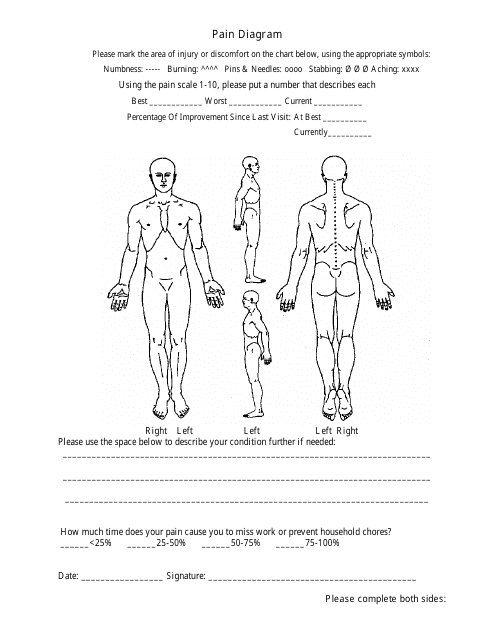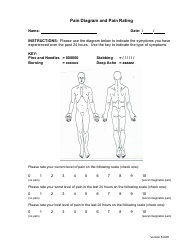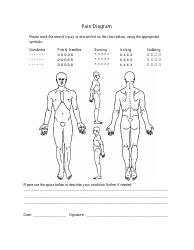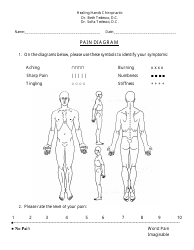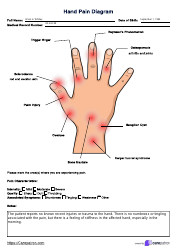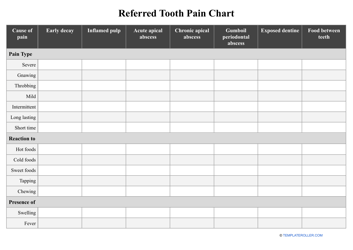Pain Diagram - With Table
A Pain Diagram With Table is typically used in medical or healthcare fields as a tool for patients to accurately communicate their pain to healthcare professionals. This document usually includes a human body figure on which patients can mark areas where they are experiencing pain.
The accompanying table is used to provide more detailed information about the pain, like intensity, frequency, nature (stabbing, burning, dull, etc.), and any triggering or relieving factors. It helps doctors and other health professionals understand and assess the patient's pain patterns, its severity, and progression. Consequently, it aids in diagnosing conditions or diseases and planning appropriate treatment strategies.
The Pain Diagram - With Table is typically filed by both patients and healthcare providers. Generally, a patient fills out the details about their pain, identifying the areas where they feel discomfort on the diagram, and rating the severity of the pain in the corresponding table. Then, the healthcare provider uses this document to better understand the patient's condition and to develop appropriate treatment plans.
FAQ
Q: What is a pain diagram?
A: A pain diagram, also known as a pain drawing, is a tool used by health professionals to understand the location, type, and intensity of pain experienced by a patient. It usually consists of a blank human body image where the patient marks areas of pain, often with different symbols indicating various types of discomfort.
Q: What is the purpose of a pain diagram?
A: The purpose of a pain diagram is to provide a visual representation of a patient's pain symptoms. It allows the patient to illustrate precisely where they're feeling discomfort, which can help healthcare providers to diagnose and treat conditions more effectively.
Q: How is a pain diagram with table used?
A: In a pain diagram with table, patients mark their areas of pain on the body image and then use the table to provide additional information. This might include the type of pain (such as sharp or dull), frequency, duration, triggers, relieving factors, and any other notes about the pain.
Q: Why is a pain diagram useful for healthcare providers?
A: A pain diagram is useful for healthcare providers as it enables them to see a visual representation of the patient's pain, thus helping with diagnosis and treatment recommendations. It also provides a way to track changes in the patient's pain over time.
Q: Can a patient fill out a pain diagram by themselves?
A: Yes, a patient can typically fill out a pain diagram by themselves, although they may need some initial guidance from a healthcare provider about how to represent different types of pain or discomfort on the diagram.
Q: What type of conditions can a pain diagram help diagnose?
A: A pain diagram can help diagnose various conditions depending on the location and type of pain. This could include musculoskeletal injuries, nerve damage, chronic pain conditions, or any health issues that involve physical discomfort.
